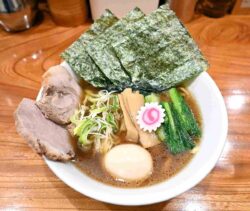Takahashi Shinjuku Honten / Flying fish ramen takes off for former housewife

14:03 JST, September 20, 2022
A skyscraper set to open next spring rises into the cloudy sky in Kabukicho, Shinjuku Ward in Tokyo. At the foot of the 48-story, 225-meter-tall Tokyu Kabukicho Tower, construction vehicles were constantly coming and going. It was 9:30 a.m., and apart from the noise of the vehicles, the area was very quiet. I visited the main branch of Yaki-ago Shio Ramen Takahashi, a famous ramen shop just a few dozen meters away from the tower.
The restaurant, as the name implies, is famous for ramen flavored with yaki-ago (dried flying fish). The manager, Keisuke Fujiwara, and another staff member were busy preparing for its 11:00 a.m. opening. I usually visit a ramen shop just after lunch time, but as this shop doesn’t close after lunch, I visited before it opened. I ordered the shop’s signature dish, “Yaki-ago shio (salt) ramen” (¥850). After a while, the first ramen of the morning arrived at my seat.
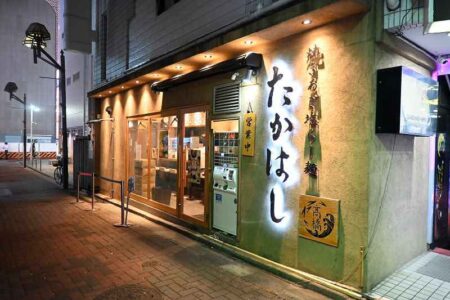
Takashashi Shinjuku during nighttime business hours
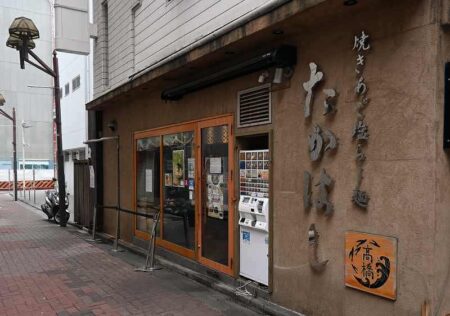
Takashashi Shinjuku before opening
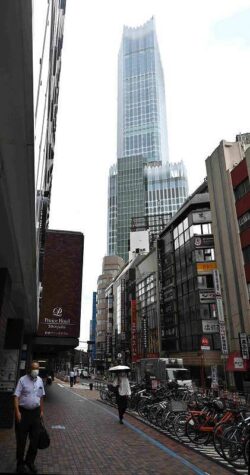
Tokyu Kabukicho Tower, a new building set to open next spring, soars into the cloudy sky.
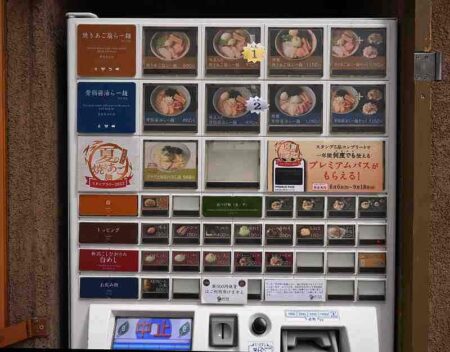
The ticket machine outside the store
The first thing you notice is the pleasant aroma rising from the dish, further enhanced by the soup which had a light and elegant umami flavor. The noodles, which are specially ordered from a noodle maker in Kyoto, pair with the soup perfectly. This ramen would be nice to eat anytime.
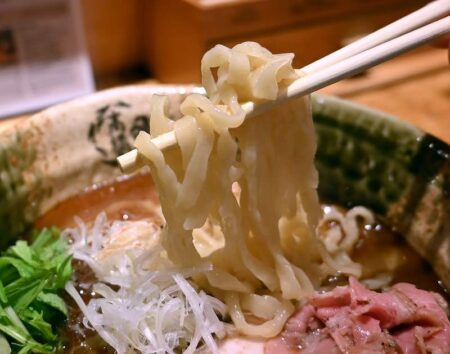
Noodles are easy to eat and go well with the soup

Soup with the smoky aroma of yaki-ago
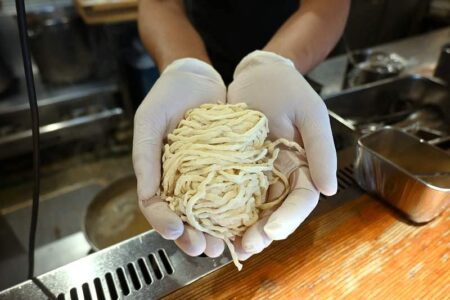
A special order of flat and curled noodles
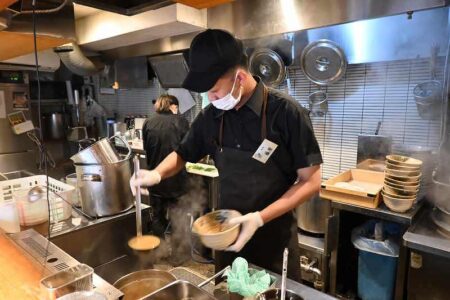
Pouring soup into a bowl
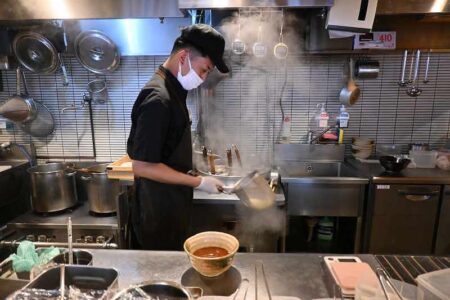
Draining hot water from the boiled noodles
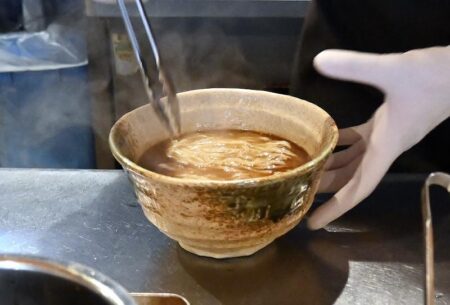
Preparing noodles in a bowl
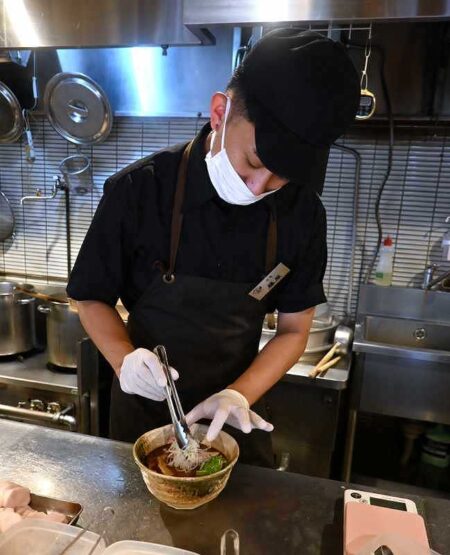
Placing white leeks on the top

Dried shrimp for extra flavor
Fujiwara, 29, explains, “We use a lot of yaki-ago in the sauce and to flavor the oil.” A unique extraction method is used to condense the rich aroma into the sauce and oil. The soup is a blend of seafood and pork bones, and the sauce and oil give out an even stronger flavor of yaki-ago.
Small dried shrimps on top of white leeks give the dish extra flavor. Other toppings include two kinds of homemade chashu (pork shoulder and chicken breast) cooked at low temperature, mizuna herbs, and extra-thick menma (bamboo shoots). The overall result is a signature dish that has a truly unique taste.
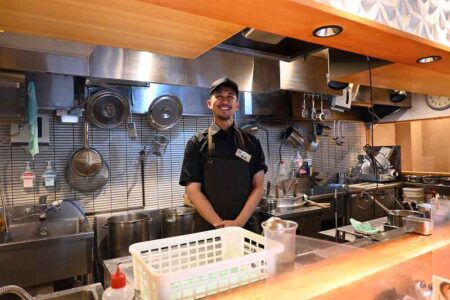
Fujiwara: “I love making customers happy.”

The “Cold Asari and Seaweed Ramen” noodles and soup is refreshingly delicious
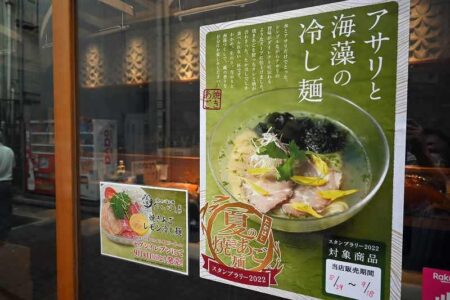
he limited menu items “Cold Asari (clam) and Seaweed Ramen” that were on sale until September 18. \ 980.

L-shaped counter with 13 seats
Finally, if you add rice to the remaining soup, it becomes ochazuke (rice in dashi soup). Wasabi and arare (Japanese crackers) are placed at the counter so you can finish the entire dish.
Fujiwara is in his 20s, but has worked in the ramen industry for nearly half his life. He worked at a local ramen restaurant in his hometown of Kawasaki when he was a 15 year old high school student. “I like to cook for people and make them happy,” says Fujiwara. “When you eat good food and receive good service, you feel satisfied, right? I want to cherish that.” Fujiwara has been working for Takahashi for three years now, and was promoted to manager a year ago. He hopes to open his own restaurant in the future.
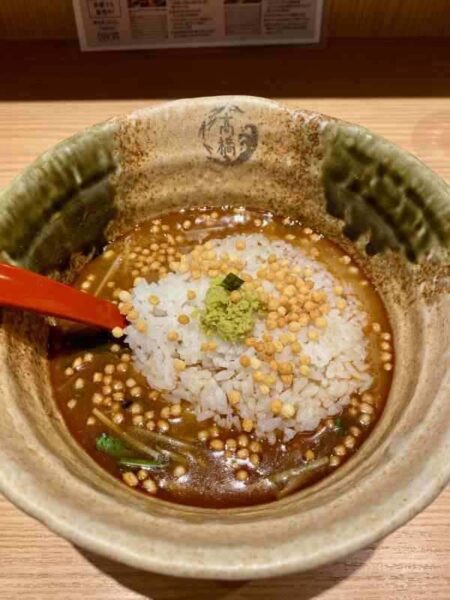
You can eat dashi chazuke by adding white rice to the remaining broth.

Various condiments are placed on the counter. Paper aprons are also available.
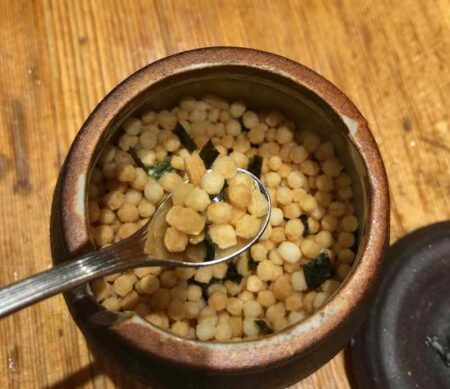
Japanese crackers for ochazuke (rice in dashi soup)
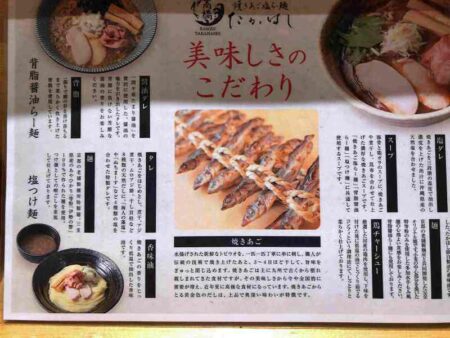
The ramen is explained on the counter.
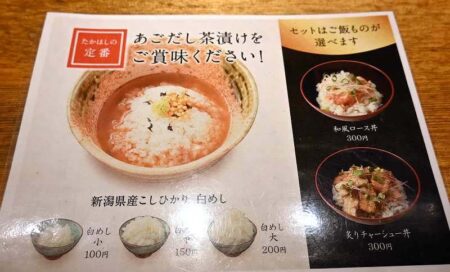
In addition to ochazuke, rice bowls with meat are also available.
The challenge of female president
But why yaki-ago? To find it out, I visited the headquarters of Hikarich Associates in Nihonbashi, Tokyo. The company operates a total of nine Takahashi ramen shops in Tokyo, Kanagawa, and Saitama. The president of the company, Yuka Takahashi, 39, appeared and her life story involves far more than just ramen.

“We aim to be a company with a range of products centered around yaki-ago,” Takahashi said, smiling. “We are putting in place a structure that will allow us to make sustainable and effective use of marine resources and to mass produce high-quality yaki-ago by ourselves.”
The story of the ramen shop began in her birthplace, Niigata Prefecture, where Takahashi was born and raised. Traditionally, yaki-ago was used as a high-quality ingredient in Japanese dashi soup. Niigata’s Sado Island has a long history of catching flying fish and producing yaki-ago, and Niigata residents including Takahashi became aware of the use of it in ramen and enjoyed the taste.
After graduating from university, Takahashi started work at a major real estate company in Tokyo but left after only six months. “It was what we would now call a ‘marriage by birth,’” she says. After returning to Niigata and becoming a full-time housewife, Takahashi had two children and devoted six years to raising them. She returned to the workforce when her youngest child turned one and started nursery school.
Takahashi said, “I wanted to do something that would develop my career and allow me to grow. But I was already 28 years old, and I thought, ‘It’s hard to join a company and fill in the blanks with such a delay.’ Then I thought, ‘The only way I can do it is to start a business.'”
The idea came to her: her love of yaki-ago ramen. She saw an opportunity as the dish was relatively unknown throughout the country. However, the business had a rocky start. “I was a total novice with no experience, wisdom, connections, or money,” she said. “It took me a year after starting my business to finally find a small, budget-friendly property to open my ramen shop.” In July 2012, she opened a ramen shop in Bunkyo Ward, Tokyo, which she ran with her husband. She attempted to create the flavor of yaki-ago ramen from scratch. However, the taste did not convey a sense of presence, and the number of customers did not increase.
The biggest challenge with yaki-ago is with the taste — it does not come out as strongly as it does with niboshi (dried fish) or dried fish flakes. In order to bring out the flavor, a large amount of yaki-ago must be used, which would make the cost higher than the usual price of ramen. Takahashi asked herself, “What do you want to convey?” She continued to experiment with the flavor even when the shop was closed, thinking about how to “express yaki-ago in a single bowl of ramen.”
It took her a year and a half to develop a taste she found satisfactory. She had discovered an effective way to extract the flavor of yaki-ago. Boiling water alone is not enough to get even half of the flavor, but other substances such as alcohol and oil worked well with the umami and aroma that dissolved out of the fish. She established a unique extraction method and succeeded using 100% of yaki-ago to make a bowl of ramen priced at 800 yen. After seeing the reaction of customers, her confidence grew, and she opened a ramen shop in Kabukicho in February 2015 bearing the name “Takahashi.”
Becoming a comprehensive yaki-ago company
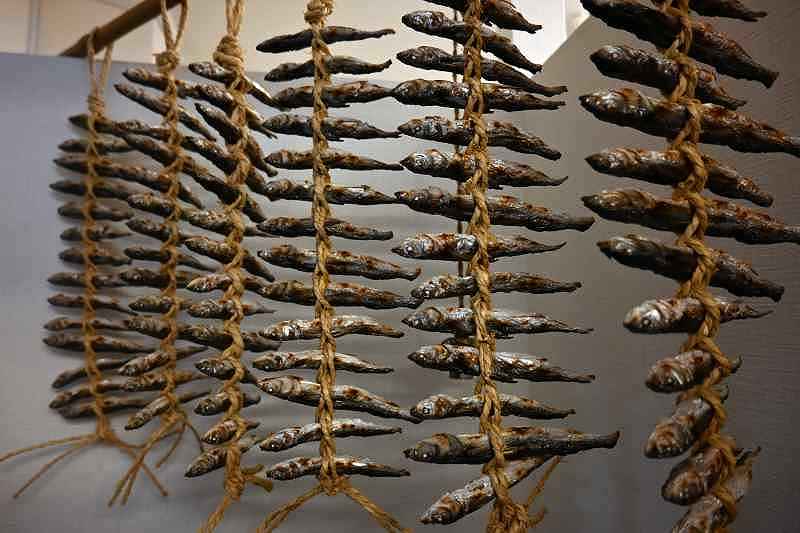
Takahashi explains, “We are now working on research on using enzymes to bring out the umami flavor.”
After spawning, flying fish loses its taste, so decreases in market value. The company is collaborating with the University of Tokyo on research that utilizes enzymes to bring out the latent umami of flying fish at any stage of growth. A demonstration experiment came close to success, and they are now preparing to jointly apply for a patent. Harvesting flying fish before they spawn will eventually deplete their stock, something that seemed to happen about six years ago during an increase in the popularity of yaki-ago. Prices have skyrocketed due to the lack of supply. Instead of the traditional method of grilling and drying, the low-cost method of mass-producing dried flying fish and then putting them through the grinder has now become the mainstream.
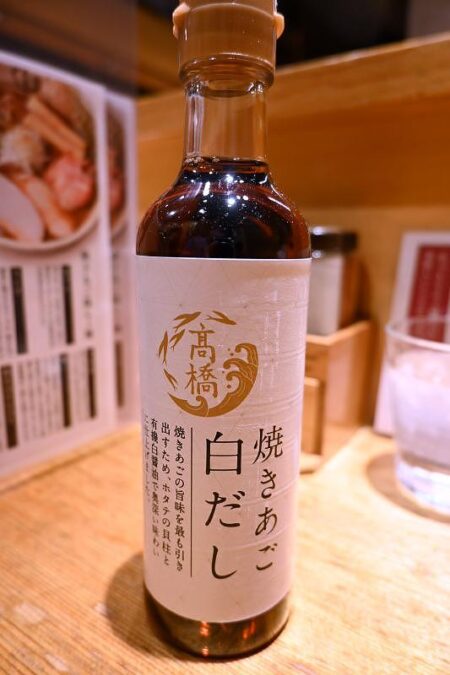
A yaki-ago shiro (white) dashi sold to take home
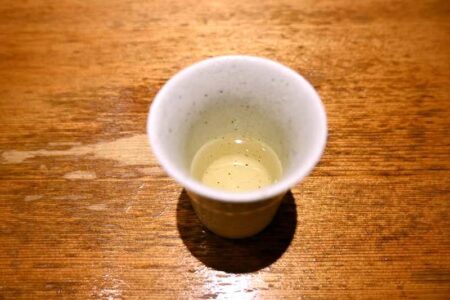
You can taste the yaki-ago shiro dashi in the shop.
Takahashi secured a cooperative factory overseas and established a supply chain for traditional yaki-ago. There is a stable catch of the fish in the warm waters of the South China Sea, but they are adults that have gone through the spawning process, which means the taste is not very good. However, Takahashi has found a way to solve the problem with enzyme technology. In the near future, the cooperative factory will be directly managed to enable the company to complete the entire process from upstream to retail: as well as supplying all of its ramen shops, it will also be able to distribute to food product manufacturers. The company also plans to increase the number of products for home use.
She said, “As a company centered around yaki-ago, we would like to expand the product’s food culture and develop it globally. Ramen shops are an important point of contact with customers in order to promote yaki-ago.” Takahashi’s dream is growing.
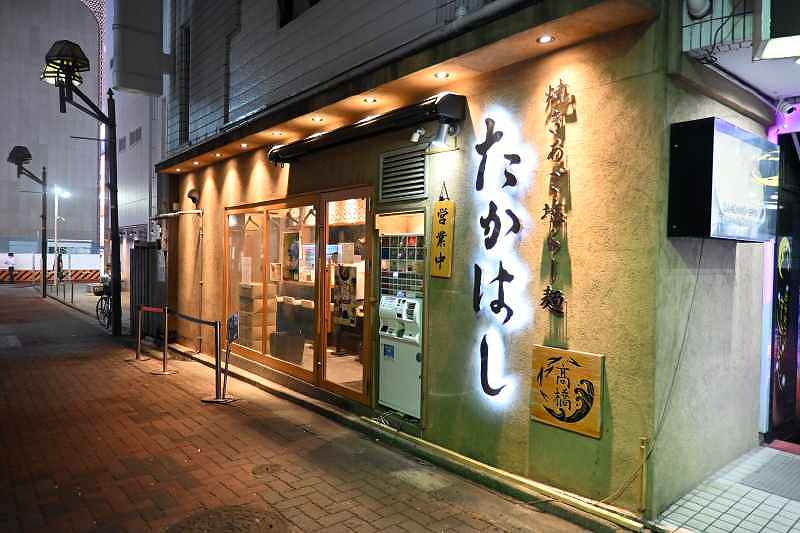
Takahashi Shinjuku Honten
1-27-3 Kabukicho, Shinjuku Ward, Tokyo. Open from 11:00 a.m. Last orders 10:45 p.m. Open daily except during the year-end and New Year’s holidays. In addition to the Shinjuku main branch, there are five other shops in Tokyo, two in Kanagawa, and one in Saitama.
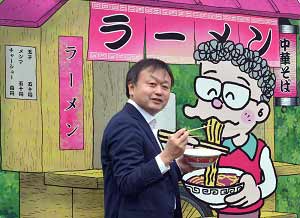
Futoshi Mori, Japan News Senior Writer
Food is a passion. It’s a serious battle for both the cook and the diner. There are many ramen restaurants in Japan that have a tremendous passion for ramen and I’d like to introduce to you some of these passionate establishments, making the best of my experience of enjoying cuisine from both Japan and around the world.
Japanese version
【ラーメンは芸術だ!】「焼きあご塩らー麺」の名店、歌舞伎町の「たかはし新宿本店」
"JN Specialities" POPULAR ARTICLE
JN ACCESS RANKING

